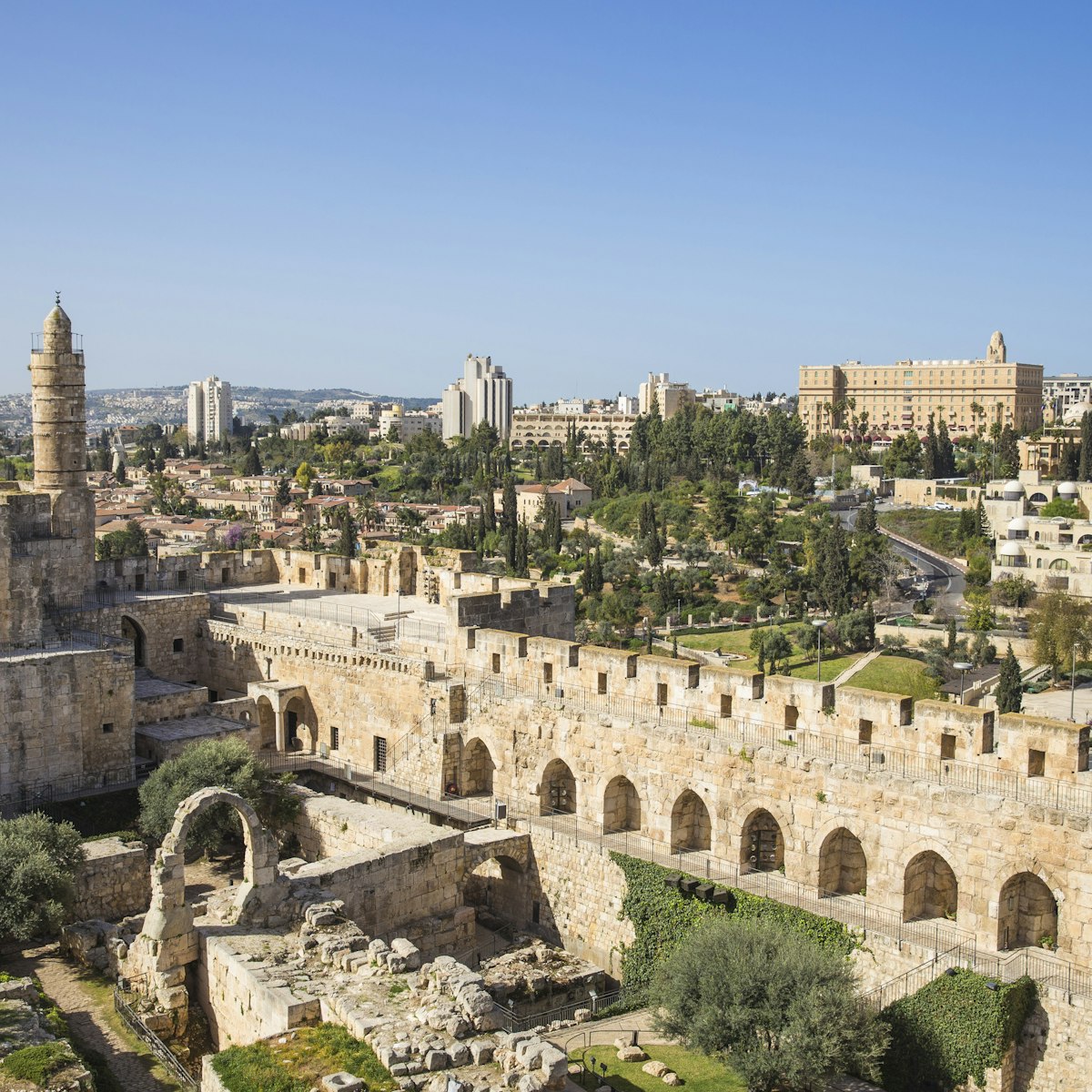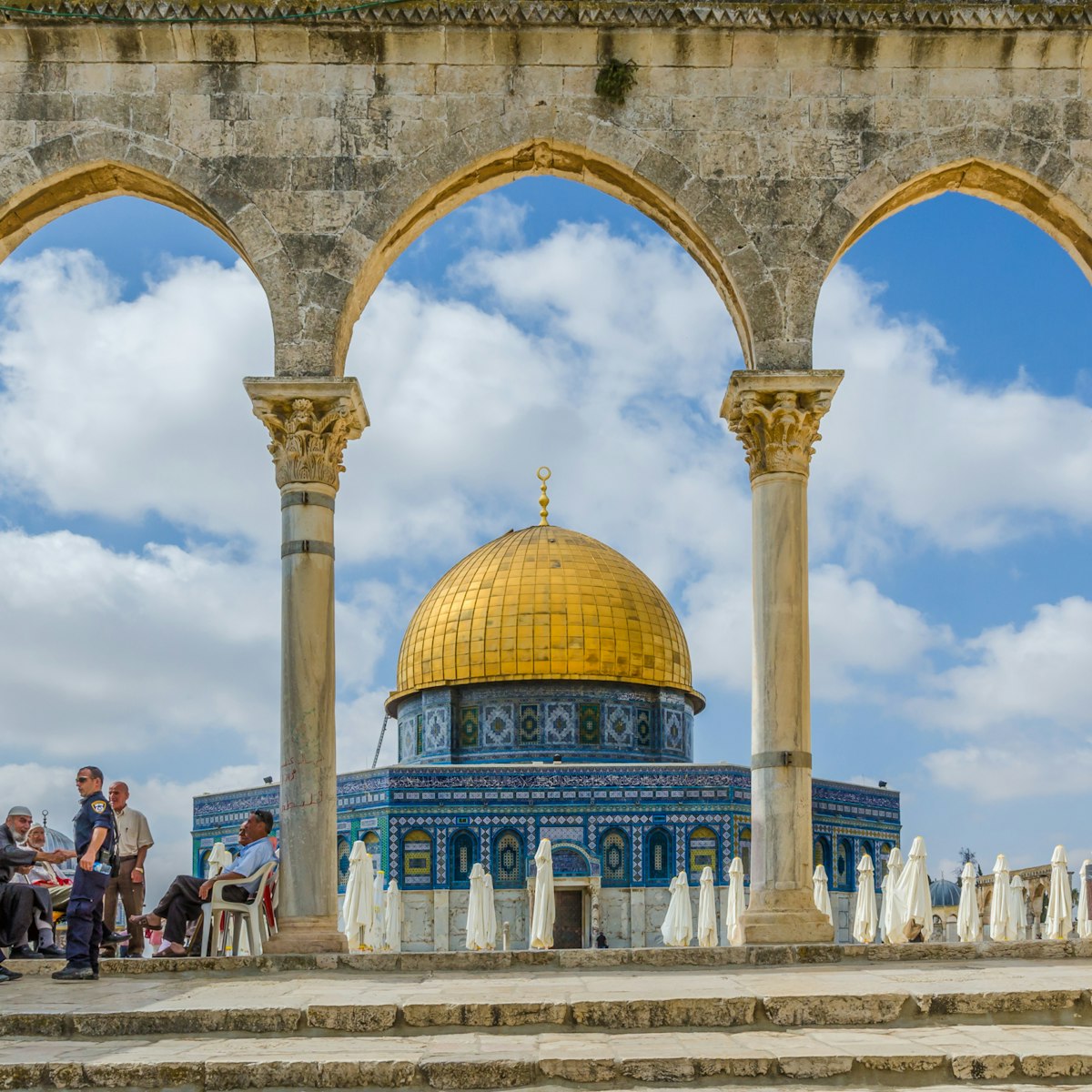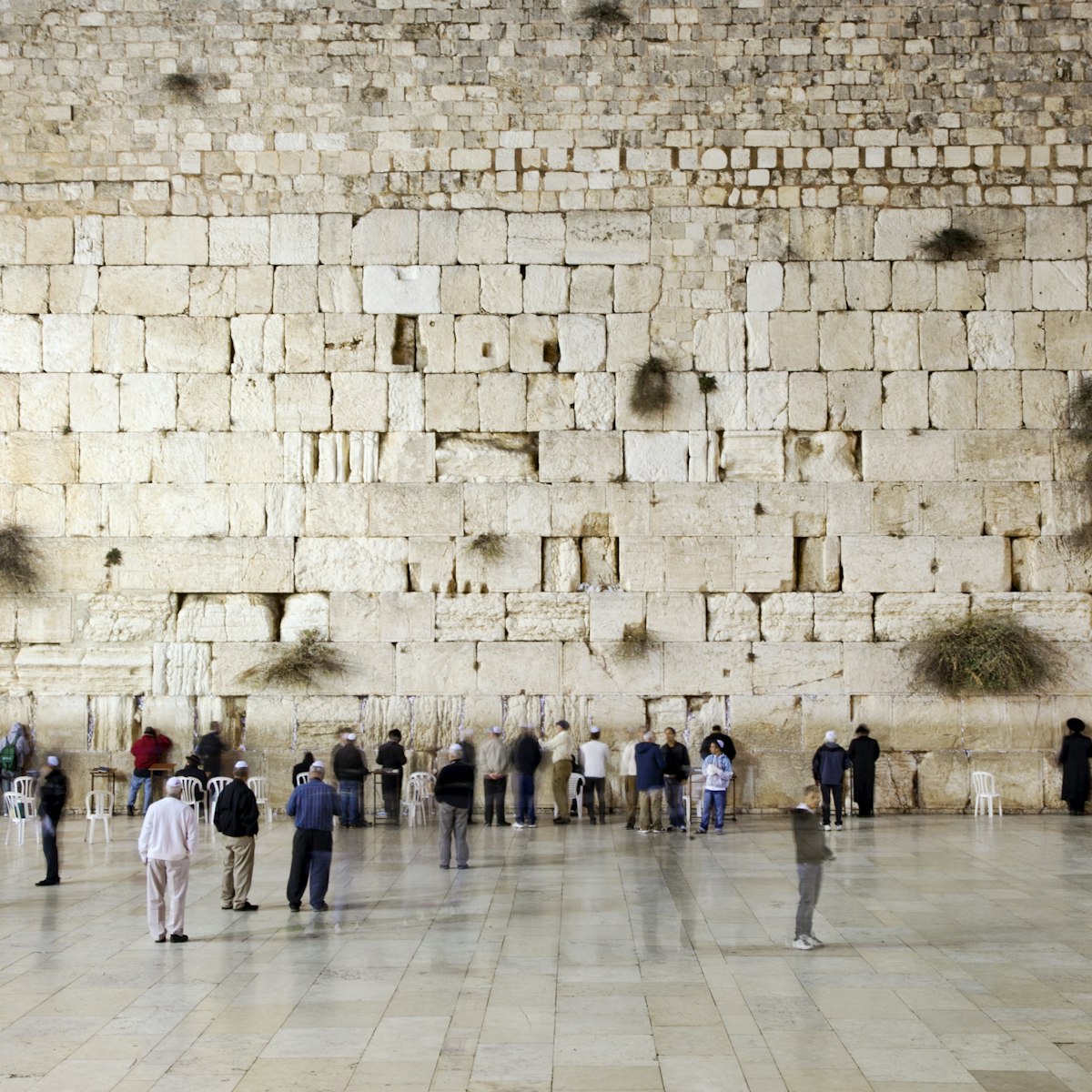Tiled panels bearing the Lord's Prayer beam from the walls of this church and cloister. Queen Helena, mother of Emperor Constantine, believed this to be the location where Jesus taught the Lord's Prayer to his disciples, and she arranged for a church to be built here. It was destroyed, but the Crusaders rebuilt a church at this site in 1152 (itself razed by the Mamluks). The current building is a partial reconstruction of the Byzantine church with a 19th-century cloister.
The tiles are decorated with the Lord's Prayer in 132 languages, though it depends on how you count: a number of languages are also represented in Braille. You'll see pilgrims hunting out the panel with their own language (and occasionally pretending not to notice the spelling mistakes).
The Byzantine church was known as the Church of the Eleona from the Greek word elaionas (olive grove), and the site still incorporates one. It also has an attached Carmelite convent. The cave where it is thought Jesus taught the prayer is in an enclosed courtyard in front of the church, down a few stairs.








